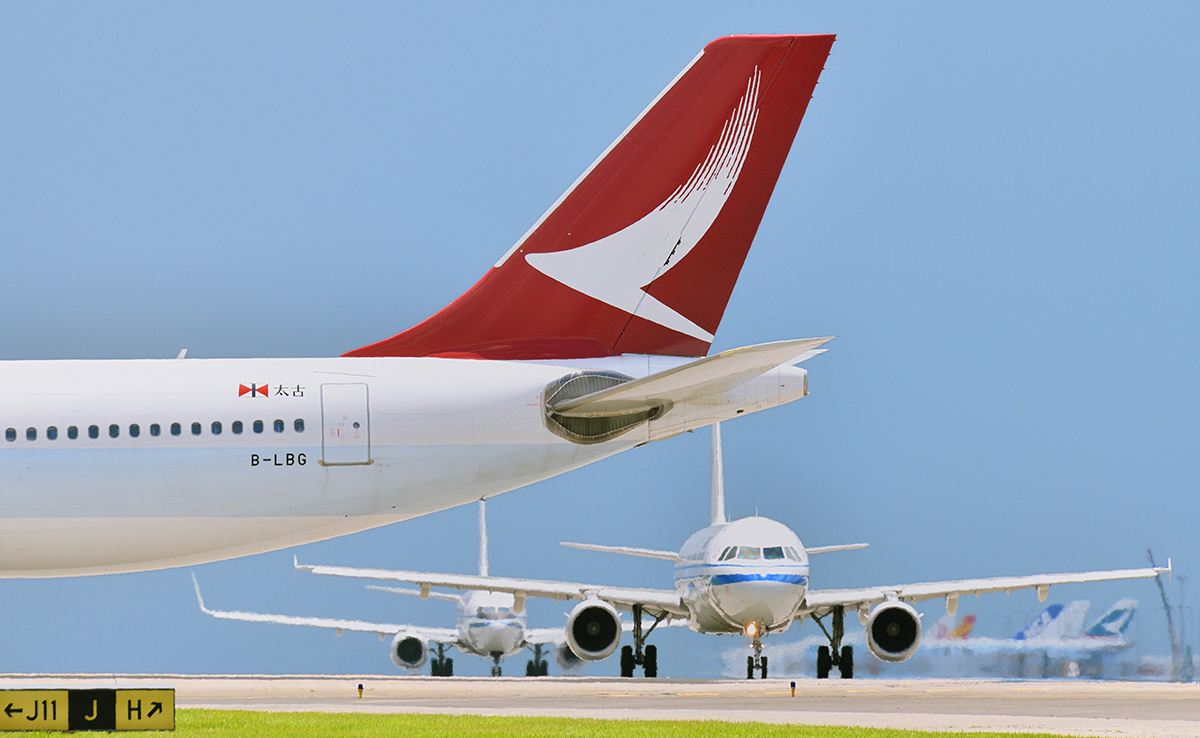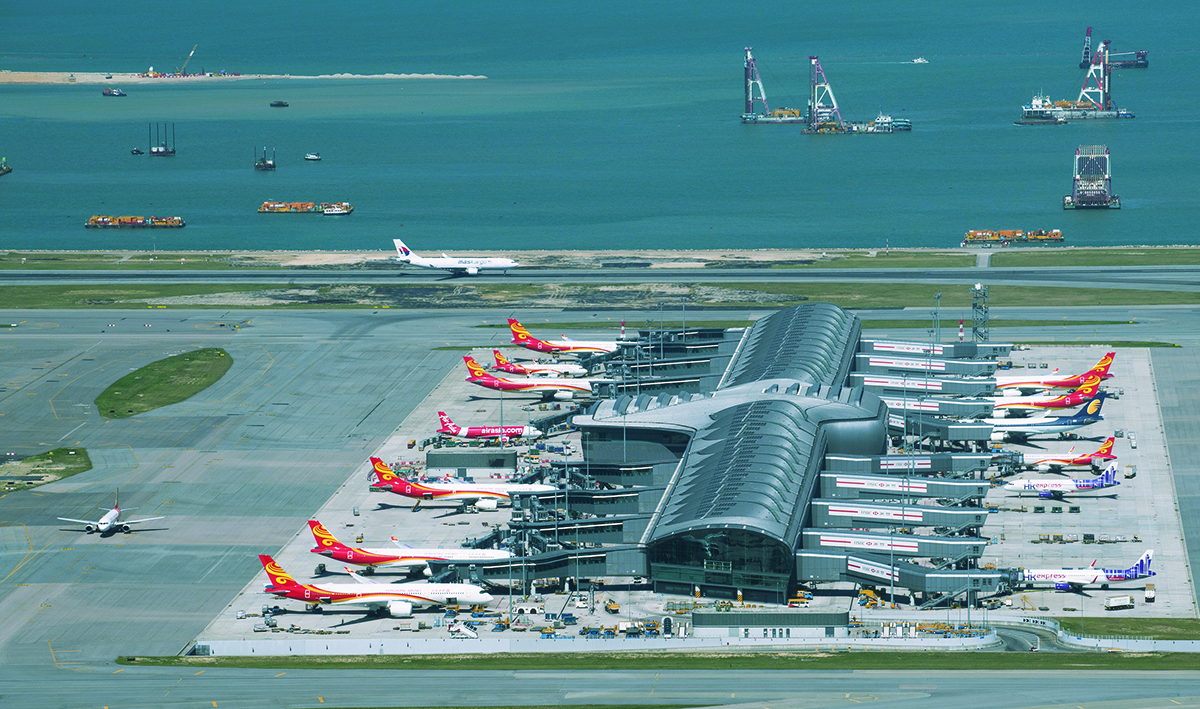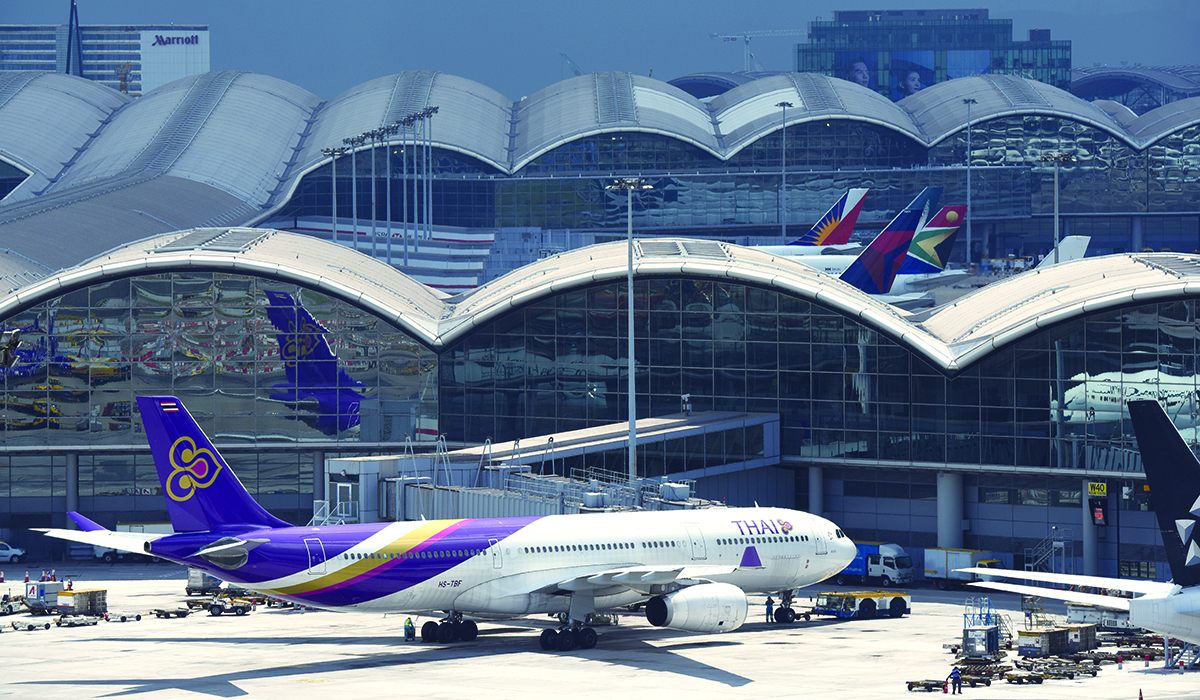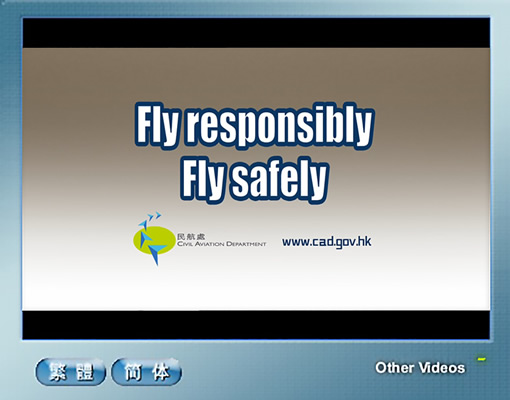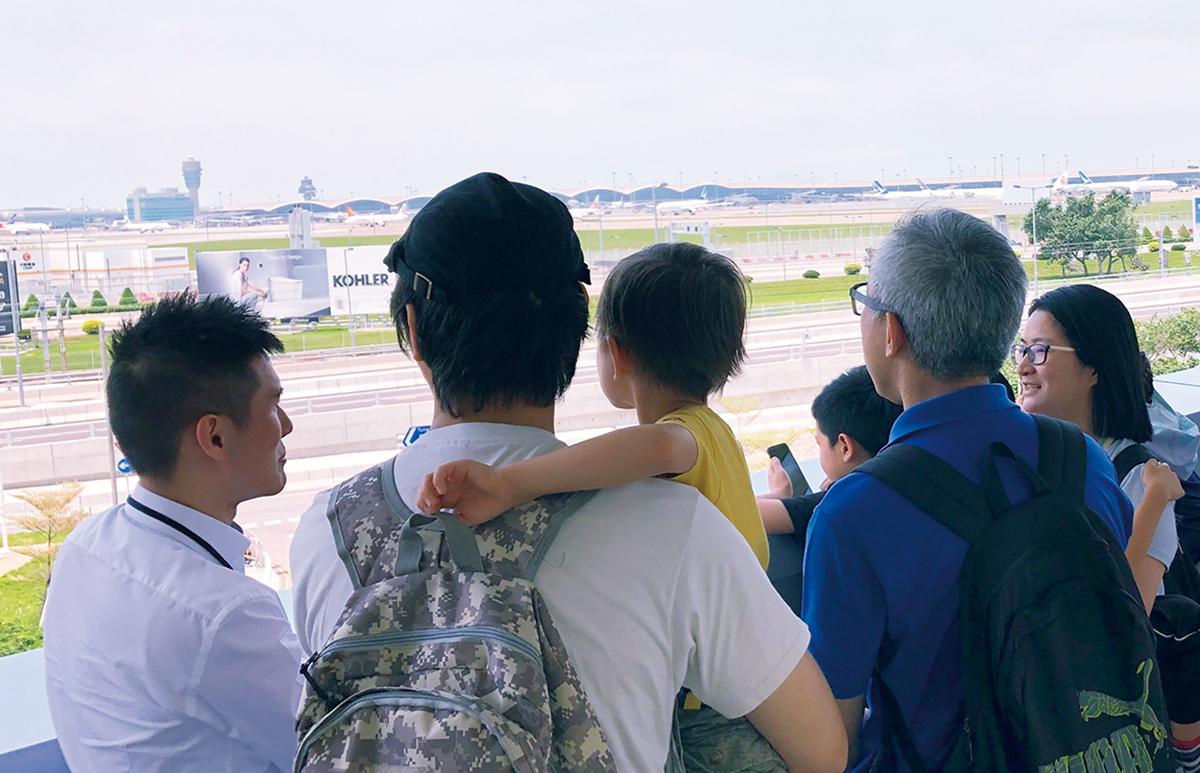The Air Services and Safety Management Division (ASMD) is responsible for monitoring the operations of airlines in compliance with bilateral air services arrangements; providing information to relevant authorities regarding air transport licence applications by local airlines and for air services negotiations; providing schedule co-ordination and slot allocation services to airlines and other aircraft operators; developing and implementing safety policy to promote and enhance safety in the aviation system; and regulating Hong Kong air navigation services. ASMD is also responsible for handling civil aviation legislative matters; handling applications and promoting public awareness for the safe operations of Unmanned Aircraft Systems (UAS) in Hong Kong; providing administrative support to the investigation of aircraft accidents and serious incidents1; coordinating the formulation of departmental training policy for departmental professional grade staff; and providing air traffic statistics to international organisations.
Air Services
Air Traffic Growth
Traffic throughput in 2018-19 reached 74.82 million passengers, representing a year-on-year growth rate of 2%. Aircraft movements also reached 428 895, representing a year-on-year growth rate of 1%. Cargo throughput was 4.96 million tonnes, representing a year-on-year drop of 0.5%.
During the year up to the end of March 2019, 127 airlines had operated direct services to and from Hong Kong, covering 220 cities/airports.
Services by Local Carriers
By the end of March 2019, Cathay Pacific Airways Limited operated direct services to 77 destinations worldwide, including new destinations to Brussels, Dublin and Washington for scheduled passenger services.
Hong Kong Dragon Airlines Limited operated direct passenger services to 49 destinations by the end of March 2019, including new destinations to Davao, Jinan and Medan.
AHK Air Hong Kong Limited (AHK) continued to operate direct all-cargo services in Asia. By the end of March 2019, AHK operated direct services to 12 destinations in Asia.
Hong Kong Airlines Limited operated direct services to 36 destinations by the end of March 2019, including new destinations to Manila and San Francisco for passenger services.
Hong Kong Express Airways Limited (HKE) is the only low cost carrier in Hong Kong. By the end of March 2019, HKE operated direct services to 23 destinations, adding Nagasaki to its network.
Hong Kong Air Cargo Carrier Limited operated direct all-cargo services to 11 destinations by the end of March 2019, including new destinations to Almaty, Hangzhou, Istanbul, Shanghai and Zhengzhou.
TAG Aviation Asia Limited continued to operate non-scheduled passenger services to cities around the world.
Sky Shuttle Helicopters Limited continued to operate non-scheduled passenger services between Hong Kong and Macao.
Heliservices (Hong Kong) Limited continued to operate local passenger charters and aerial work services.
Services by Non-Hong Kong Carriers
Four non-Hong Kong operators commenced new scheduled passenger services during the year. EgyptAir commenced services from Cairo in September 2018. Thai Smile Airways commenced services from Bangkok and Phuket in October 2018. Spice Jet Limited commenced services from Delhi in November 2018. Interglobe Aviation Limited commenced services from Bengaluru in December 2018.
For scheduled all-cargo services, two non-Hong Kong operators commenced new services during the year. Sky Gates Airlines commenced services from Moscow in August 2018. Spice Jet Limited commenced services from Delhi and Kolkata in November 2018.
During the year, eight airlines suspended their scheduled services to and from Hong Kong. They were Singapore Airlines Cargo in April 2018, JC (Cambodia) International Airlines, Air Belgium, Delta Air Lines, SriLankan Airlines and Austrian Airlines in October 2018, Air Cargo Global in December 2018, and ASL Airlines Belgium in March 20192;
During the year, the CAD issued 136 operating permits to airlines for operation of scheduled services to and from Hong Kong, and processed around 5 500 applications for changes to the schedules. A total of 1 195 permits were also issued for the operation of charter services to, from and in Hong Kong.
Tariffs
During the year, the CAD processed 898 tariff filings for carriage of passengers and cargo on scheduled services to and from Hong Kong. Liberalisation of passenger fuel surcharge and the new price display requirements for sale of air tickets was implemented on 1 November 2018, while the time-limited arrangement to allow airlines to levy cargo fuel surcharges continued.
Air Transport Licensing
In accordance with the Air Transport (Licensing of Air Services) Regulations (Chapter 448A), any person intending to use Hong Kong-registered aircraft to operate scheduled services to carry passengers, mail or cargo must apply to the Air Transport Licensing Authority for a licence for such operations. During the year, the CAD provided the Air Transport Licensing Authority with air services-related information and statistics with regard to one application for variation of licence.
Slot Allocation
In accordance with the International Air Transport Association's Worldwide Slot Guidelines, the Hong Kong Schedule Coordination Office (HKSCO) managed slot allocation in a fair, neutral and transparent manner, with a view to ensuring the efficient utilisation of existing airport infrastructure. During the year, airlines and other aircraft operators at HKIA were allocated a total of 431 940 slots. The utilisation rate of the allocated slot was over 99%. HKSCO will continue to work closely with industry stakeholders in order to maximise the utilisation of slots.
Activities of ICAO
To maintain the status of Hong Kong as a centre of international and regional civil aviation in accordance with the provisions of the Basic Law, and to facilitate the discharge of Hong Kong's responsibilities under the regional air navigation procedures of the International Civil Aviation Organization (ICAO), the CAD continued to participate actively in ICAO's activities including meetings, symposiums, seminars, etc. During the year, representatives of the department attended six ICAO meetings which were limited to states as part of the delegation of the People's Republic of China, and 26 ICAO meetings which were not so limited, using the name "Hong Kong, China". Details of these 32 meetings are provided in the Appendix. The department also exchanged 437 letters with ICAO, the majority of which involved comments and information on technical matters related to civil aviation.
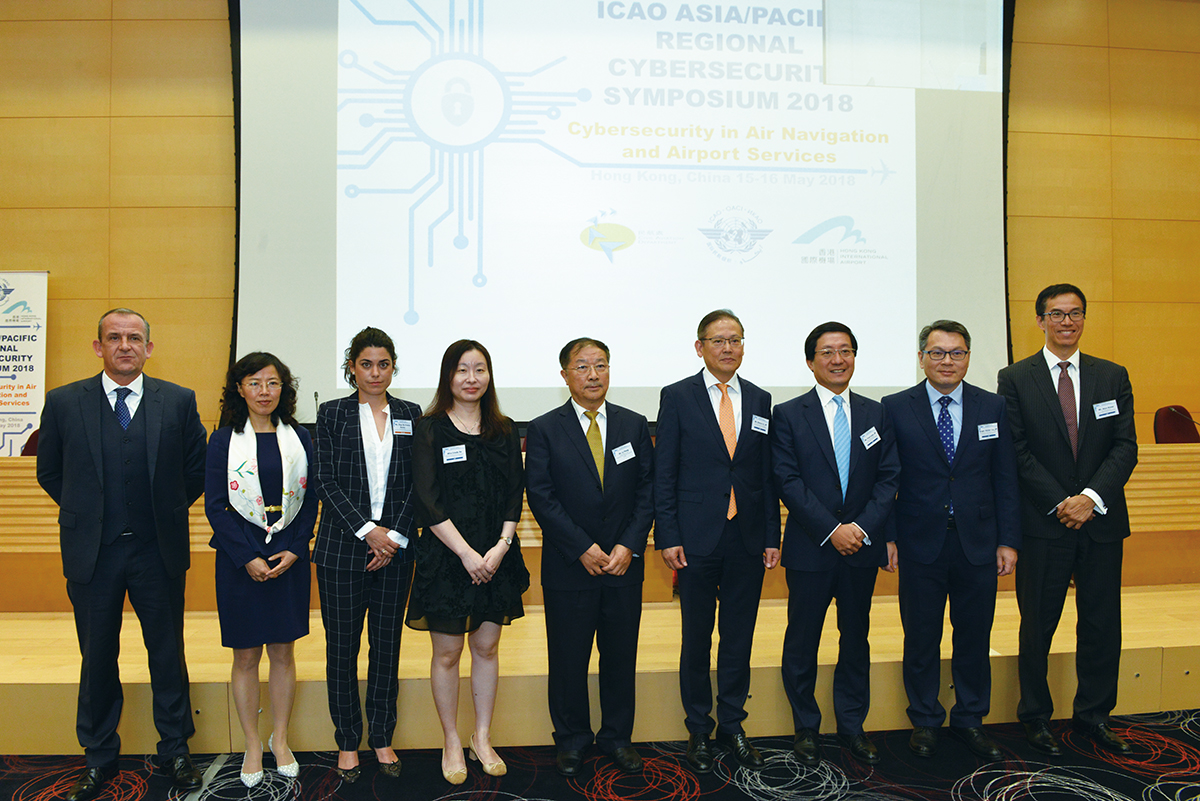
ICAO Asia and Pacific Regional Cybersecurity Symposium, jointly organised by the CAD and ICAO, was held in May 2018 at CAD Headquarters.
Activities of APEC
The CAD continued to support aviation related activities and initiatives of APEC using the name "Hong Kong, China". During the year, the department handled 29 requests relating to APEC, which involved provision of comments and information on technical matters related to civil aviation.
Unmanned Aircraft Systems (UAS)
At present, Article 48 of the Air Navigation (Hong Kong) Order 1995 (Cap. 448C) stipulates a person shall not recklessly or negligently cause or permit an aircraft to endanger any person or property.
To refine the above regulatory regime with a view to accommodating the technological development and diversified uses of UAS while safeguarding public safety, the CAD engaged a consultant in March 2017 to conduct a study on the regulation of UAS. The consultant proposed a registration and a risk-based system to regulate the operations of UAS in Hong Kong.
In April 2018, the CAD published the consultancy report and launched a three-month public consultation on the directions for regulating UAS. To gauge views from the relevant stakeholders, the CAD also held various focus group meetings with concerned parties including recreational/commercial UAS operators, UAS manufacturers, unmanned/model aircraft associations, engineering and research organisations, insurance authority/association and media associations.
During the consultation period, a total of 147 written submissions were received. In general, the public and stakeholders are supportive towards an enhanced regulatory regime of UAS in Hong Kong, including the establishment of an UAS registration system, adoption of a risk-based classification of UAS operations, prescribing insurance requirements in respect of third party liability, and imposing additional requirements on UAS equipment and training and/or assessment of persons flying UAS. Respondents also welcome the publication of drone map to delineate restricted flying zones.
Taking into account the recommendations of the consultancy study, views received during the public consultation and practices in other major jurisdictions, the CAD proposed that legislative amendments should be made to provide an enhanced regulatory regime. The CAD is preparing the draft legislation, with a view to tabling it into the Legislative Council as soon as possible.
Legislation aside, the CAD will continue to strengthen its publicity and educational efforts in a bid to enhance the awareness of industry and general public on the safety of operating UAS.
Strategic Safety Office
The Strategic Safety Office is responsible for implementing safety management initiatives and requirements. It plans and coordinates the State Safety Programme (SSP) and Continuous Monitoring Approach (CMA) activities for the department and promotes the effective implementation of safety management principles.
Continuous Monitoring Approach (CMA) Implementation
The implementation of the CMA by ICAO since January 2013 has replaced the previous cyclical audits on states by ICAO. Under the CMA, all states and administrations are required to provide the required information to ICAO for the latter's continuous review, with a view to enhancing the safety oversight capability of states and administrations and promoting global aviation safety.
In the light of the latest CMA developments, the CAD has proactively implemented the CMA activities through the coordination of the CMA Coordination Working Group in the formulation of the action plans and associated tasks, which include provision of the required information to ICAO and conduct of CMA internal audits. Positive progress in the CMA implementation was achieved during the year.
State Safety Programme (SSP) Implementation
The CAD continued to implement SSP according to the "Hong Kong Aviation Safety Programme" (HKASP), which was reviewed and updated with reference to the latest ICAO's requirements and guidance on safety management.
To comply with the latest amendments to the international standards and recommended practices in safety management under ICAO Annex 19, the third issue of HKASP was published in May 2018.
The CAD had completed the actions required under the latest ICAO SSP requirements and achieved full implementation of the SSP Implementation Plan in the HKASP. During the year, a Safety Management Workshop was organised to promote effective safety performance management and was well attended by the local aviation industry.
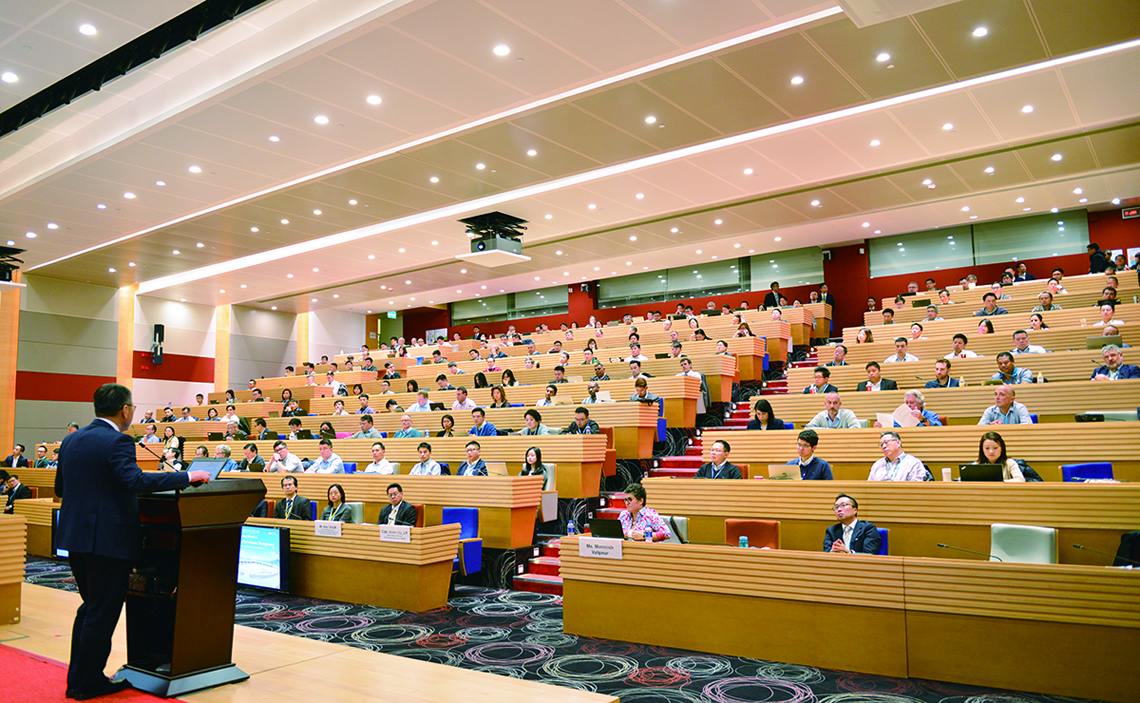
A Safety Management Workshop was organised to promote effective safety performance management and was well attended by the local aviation industry.
The CAD will continue to progressively introduce performance-based regulatory elements in our safety oversight system and to adopt a phased approach to implement the related global aviation safety strategies and safety management provisions with a view to continually enhancing our safety regulation.
Aircraft Accident and Serious Incident Investigations
To comply with an Annex 13 requirement that became applicable in November 2016, i.e. the accident investigation authority should be independent from the state aviation authorities and other entities that could interfere with the conduct or objectivity of an investigation, the Government set up an independent air accident investigation authority under the Transport and Housing Bureau. With effect from 10 September 2018, a new Aircraft Accident Investigation Authority (AAIA) took over the responsibility and authority to investigate aircraft accidents and serious incident in Hong Kong from the CAD.
Air Traffic Management Standards Office (ATMSO)
ATMSO is responsible for ensuring that a high standard of safety in the provision of air navigation services in Hong Kong is established, achieved and maintained.
Safety Oversight Activities
ATMSO conducted regular audits and safety inspections on the Air Traffic Management Division (ATMD) and Air Traffic Engineering Services Division (AESD). During the year, a total of 28 audits and safety inspections were conducted.
The safety inspections included Air Traffic Management (ATM) and Communication, Navigation and Surveillance (CNS) activities in operations, procedures, training, examinations, Safety Management System (SMS) implementation, ATC equipment/systems, safety occurrences investigations, maintenance arrangement, internal audits and follow-up actions arising from safety recommendations.
In February 2019, ATMSO Inspectorate staff conducted an SMS renewal inspection on ATMD SMS in accordance with the requirements of the ICAO and Air Navigation (Hong Kong) Order 1995. Consequently, it was successfully renewed up to 2024.
As part of its duties, ATMSO participated in the preliminary investigations of all ATC incidents jointly with ATMD investigators to determine the category and severity of the incident. A decision would then be made as to the form of investigation to be conducted in accordance with established provisions. During the year, ATMSO conducted safety review of ATC incidents.
Through the Air Navigation Services Standards Coordination Meeting and the Air Traffic Safety Assessment Committee, ATMSO also regularly reviewed in collaboration with air navigation service provider and the safety personnel of other stakeholders, e.g. Flight Standards and Airworthiness Division, major local airline operators and the Government Flying Service, etc., issues pertinent to safety occurrences, the implementation of SMS and safe air navigation service provisions to promote continual development and improvement.
Documentation
ATMSO reviews and updates existing regulatory documents periodically to ensure that they remain accurate, valid and up-to-date. In the year, ATMSO had issued an amendment to the Guidance for Air Traffic Incident Investigation (CAD636) and promulgated an Air Navigation Services Information Notice.
ATC Personnel Licensing
In accordance with the standards in ICAO Annex 1 and the requirements of Air Navigation (Hong Kong) Order 1995, ATMSO processed 162 initial awards of ATC Licences, ATC Ratings and Certificates of Competency, as well as 175 renewals of Ratings and Certificates.
Safety Promotion
For safety promotion, ATMSO conducted periodic briefings and issued safety promotion information to the air navigation service providers and the staff of the maintenance services provider on safety culture and SMS to reinforce safety oversight and safety management concepts. In addition, ATMSO regularly published regulatory information and safety management materials on the intranet for convenient access by all air navigation services staff.
Training and Development
ASMD supports the Training and Development Committee (TDC) of the Department in formulating the departmental training policy and making recommendations on the endorsement of the departmental training programme. By maintaining close liaisons with divisional training coordinators, ASMD continued to provide support for taking forward department-wide training/learning initiatives and promoting continuous learning culture within the department through organising knowledge management activities.
Knowledge Management Activities
ASMD regularly coordinates knowledge management activities such as talks on latest aviation developments or trends, visits to industry partners and stakeholders in order to foster a strong continuous learning culture within the department. Amongst these activities, the "Learning Wednesday" remains very popular amongst staff. Internal and external experts had been invited to deliver talks to share knowledge related to aviation. The talk, featuring as its last session an interactive discussion between speakers and audience, provided an effective forum for colleagues to share knowledge and experiences.
Aviation Education Path
The Aviation Education Path (AEP) continued to fulfil its role as an effective educational tool. Guided tours of AEP enhanced the public understanding of the CAD's functions and responsibilities, historical developments of civil aviation in Hong Kong and the importance of aviation safety. In the year, AEP received around 17 000 visitors, with a majority from local schools.
Hong Kong International Aviation Academy
Established and managed by the Airport Authority Hong Kong, the Hong Kong International Aviation Academy (HKIAA) started to launch training courses in April 2017. The CAD continued to provide support to HKIAA by advising on relevant course contents, training materials and instructor qualifications and accommodating relevant courses to be held at CAD Headquarters' training facilities.
- With effect from 10 September 2018, the Air Accident Investigation Authority was set up under the Transport and Housing Bureau to take over the responsibility and authority to investigate aircraft accidents and serious incident in Hong Kong.
- Cambodia Angkor Air suspended their scheduled services in March 2018.


